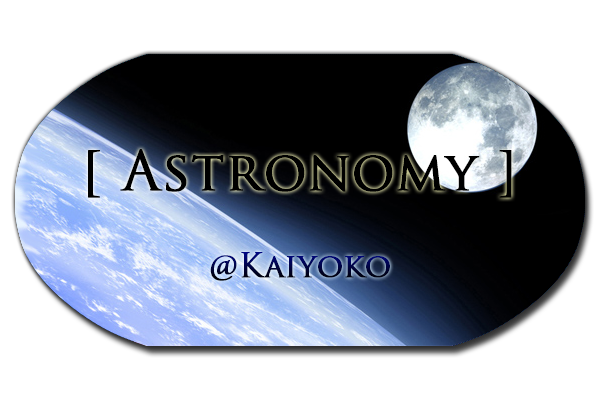
 Hi to everyone e bentornati sulla mia steem-page!
Hi to everyone e bentornati sulla mia steem-page!
Quest'oggi ho appena saputo una cosa decisamente interessante per noi amanti del cielo notturno e volevo approfittarne per approfondire l'argomento e informarvi anche voi con un post all'insegna del “forse non tutti sanno che..” su ciò che ci aspetta in questo 2018 nuovo di zecca!
Iniziamo!
 Hi to everyone and welcome on the my steem-page!
Hi to everyone and welcome on the my steem-page!
Today I just knew something very interesting for us lovers of the night sky and I wanted to take the opportunity to deepen the subject and also inform you with a post of "maybe not everyone knows that .." on what awaits us in this 2018 brand new! Let's begin!
[01 Gennaio 2018]
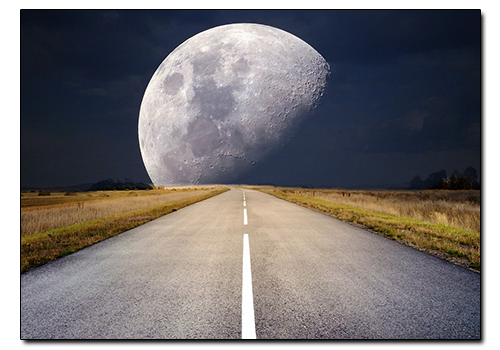
[ Fonte ]
 Una Superluna è, come potete immaginare, una luna di dimensioni più grandi del consueto svettante nel cielo. Nel corso della storia ci sono state diverse Superlune, di cui abbiamo nota delle più rilevanti a partire dal secolo scorso per tutto il resto del secolo corrente su Wikipedia. La definizione scientifica della Superluna è perigeo lunare, ovvero il massimo avvicinamento della Luna alla Terra lungo la sua orbita. Secondo i calcoli della Nasa, la Luna è il 14% più grande ed il 30% più luminosa durante questa fase.
Una Superluna è, come potete immaginare, una luna di dimensioni più grandi del consueto svettante nel cielo. Nel corso della storia ci sono state diverse Superlune, di cui abbiamo nota delle più rilevanti a partire dal secolo scorso per tutto il resto del secolo corrente su Wikipedia. La definizione scientifica della Superluna è perigeo lunare, ovvero il massimo avvicinamento della Luna alla Terra lungo la sua orbita. Secondo i calcoli della Nasa, la Luna è il 14% più grande ed il 30% più luminosa durante questa fase.
E vabbè, capodanno è già passato ma è comunque parte del 2018, non potevo esimermi dall'inserirlo nell'elenco!
 A Supermoon is, as you can imagine, a moon larger than the usual soaring in the sky. Throughout history there have been several Supermoons, of which we have known the most relevant since the last century for the rest of the current century on Wikipedia.
A Supermoon is, as you can imagine, a moon larger than the usual soaring in the sky. Throughout history there have been several Supermoons, of which we have known the most relevant since the last century for the rest of the current century on Wikipedia.
The scientific definition of the Superluna is lunar perigee , or the maximum approach of the Moon to the Earth along its orbit. According to NASA calculations, the Moon is 14% larger and 30% brighter during this phase. And oh well, New Year has already passed but it is still part of 2018, I could not fail to include it in the list!
[15 Febbraio 2018]
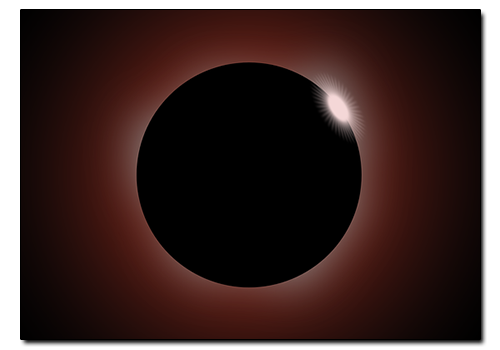
[ Fonte ]
 Ok, credo sappiamo tutti cos'è un'eclissi solare, quindi non starò a dirlo facendo la figura di Capitan Ovvio, quel che non sapete forse però è che questa eclissi sarà un'eclissi parziale ed avverrà niente-poco-di-meno-che in Antartide e Sud America. Eh sì, se volete vederla e siete da quelle parti in vacanza, non mancherete (sempre che vi sia bel tempo)! Ce ne sarà una anche in Australia il 13 Luglio, sempre parziale, mentre qui da noi in Europa ed Asia si stima avverrà in data 11 Agosto.
Ok, credo sappiamo tutti cos'è un'eclissi solare, quindi non starò a dirlo facendo la figura di Capitan Ovvio, quel che non sapete forse però è che questa eclissi sarà un'eclissi parziale ed avverrà niente-poco-di-meno-che in Antartide e Sud America. Eh sì, se volete vederla e siete da quelle parti in vacanza, non mancherete (sempre che vi sia bel tempo)! Ce ne sarà una anche in Australia il 13 Luglio, sempre parziale, mentre qui da noi in Europa ed Asia si stima avverrà in data 11 Agosto.
 Ok, I think we all know what a solar eclipse is, so I'm not going to say this by doing the figure of Captain Obvious, what you do not know, though, is that this eclipse will be a partial eclipse and nothing will happen-not-less that in Antarctica and South America. Oh yes, if you want to see it and you're there on vacation, you will not miss (provided there is good weather)! There will also be one in Australia on July 13, always partial, while here in Europe and Asia it will be estimated on August 11.
Ok, I think we all know what a solar eclipse is, so I'm not going to say this by doing the figure of Captain Obvious, what you do not know, though, is that this eclipse will be a partial eclipse and nothing will happen-not-less that in Antarctica and South America. Oh yes, if you want to see it and you're there on vacation, you will not miss (provided there is good weather)! There will also be one in Australia on July 13, always partial, while here in Europe and Asia it will be estimated on August 11.
[2 e 31 Marzo 2018]

[ Fonte ]
 Avviene una volta ogni 3 anni, ma nonostante il nome non è davvero una luna dalla sfumatura bluastra, come molti di noi sognavano e speravano la prima volta che ne hanno sentito parlare. Ma allora di cosa si tratta? È semplicemente la seconda luna piena verificatasi in un unico mese (cosa rara di per sé proprio per la durata di un ciclo lunare che è di 28 giorni esatti).
Avviene una volta ogni 3 anni, ma nonostante il nome non è davvero una luna dalla sfumatura bluastra, come molti di noi sognavano e speravano la prima volta che ne hanno sentito parlare. Ma allora di cosa si tratta? È semplicemente la seconda luna piena verificatasi in un unico mese (cosa rara di per sé proprio per la durata di un ciclo lunare che è di 28 giorni esatti).
 It happens once every 3 years, but despite the name it is not really a bluish-hued moon, like many of us dreamed and hoped the first time they heard about it. So what is it? It is simply the second full moon that occurred in a single month (which is rare in itself for the duration of a lunar cycle which is exactly 28 days).
It happens once every 3 years, but despite the name it is not really a bluish-hued moon, like many of us dreamed and hoped the first time they heard about it. So what is it? It is simply the second full moon that occurred in a single month (which is rare in itself for the duration of a lunar cycle which is exactly 28 days).
[16-25 Aprile 2018]
 La Liride è uno sciame meteorico osservato per la prima volta dai cinesi alcuni secoli A.C. con radiante localizzato nella costellazione della Lira. Uno sciame meteorico è, secondo Wikipedia, la “caduta” di un numero di meteore maggiore di 10 (per adesso) che entrando in contatto con l'atmosfera terrestre bruciano, tracciando scie luminose sulla volta celeste. Questo sciame è di cadenza annuale.
La Liride è uno sciame meteorico osservato per la prima volta dai cinesi alcuni secoli A.C. con radiante localizzato nella costellazione della Lira. Uno sciame meteorico è, secondo Wikipedia, la “caduta” di un numero di meteore maggiore di 10 (per adesso) che entrando in contatto con l'atmosfera terrestre bruciano, tracciando scie luminose sulla volta celeste. Questo sciame è di cadenza annuale.
 The Lirid is a meteor shower observed for the first time by the Chinese some centuries A.C. with radian located in the constellation of the Lira. A meteor shower is, according to Wikipedia, the "fall" of a number of meteors greater than 10 (for now) that by coming into contact with the Earth's atmosphere they burn, tracing light trails on the celestial vault. This shower is of annual cadence.
The Lirid is a meteor shower observed for the first time by the Chinese some centuries A.C. with radian located in the constellation of the Lira. A meteor shower is, according to Wikipedia, the "fall" of a number of meteors greater than 10 (for now) that by coming into contact with the Earth's atmosphere they burn, tracing light trails on the celestial vault. This shower is of annual cadence.
[6 e 7 Maggio 2018]
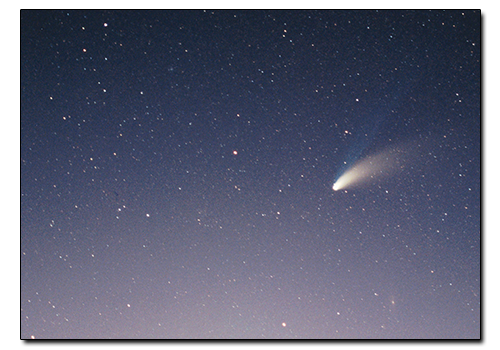
[ Fonte ]
 La cometa di Halley è una delle comete che periodicamente passano accanto alla Terra (o viceversa, cui la Terra si ritrova a incrociarne il tragitto nella volta celeste, che dir si voglia). Durante l'ultimo incontro – 1986 – purtroppo a causa dell'inquinamento luminoso tale cometa non ha raggiunto i livelli di luminosità precedenti a causa dell'inquinamento luminoso e molte persone non l'hanno vista affatto. Questa cometa ha un ciclo di c.ca 90 anni e il prossimo passaggio vicino al nostro pianeta è previsto per il 2062.
La cometa di Halley è una delle comete che periodicamente passano accanto alla Terra (o viceversa, cui la Terra si ritrova a incrociarne il tragitto nella volta celeste, che dir si voglia). Durante l'ultimo incontro – 1986 – purtroppo a causa dell'inquinamento luminoso tale cometa non ha raggiunto i livelli di luminosità precedenti a causa dell'inquinamento luminoso e molte persone non l'hanno vista affatto. Questa cometa ha un ciclo di c.ca 90 anni e il prossimo passaggio vicino al nostro pianeta è previsto per il 2062.
Ma allora..? Quella che vedremo sul nostro cielo (se siamo fortunati, s'intende) è una “lacrima” della suddetta cometa, un frammento che staccatosi dal corpo originario ne percorre la scia.
 The comet of Halley is one of the comets that periodically pass near the Earth (or vice versa, to which the Earth finds itself crossing the path in the sky, if you prefer). During the last meeting - 1986 - unfortunately due to light pollution, this comet did not reach the previous light levels due to light pollution and many people did not see it at all. This comet has a cycle of c.ca 90 years and the next passage near our planet is scheduled for 2062.
The comet of Halley is one of the comets that periodically pass near the Earth (or vice versa, to which the Earth finds itself crossing the path in the sky, if you prefer). During the last meeting - 1986 - unfortunately due to light pollution, this comet did not reach the previous light levels due to light pollution and many people did not see it at all. This comet has a cycle of c.ca 90 years and the next passage near our planet is scheduled for 2062.
But then..? What we will see on our sky (if we are lucky, of course) is a "tear" of the aforementioned comet, a fragment that detaches itself from the original body and runs through its wake.
[28 Luglio 2018]
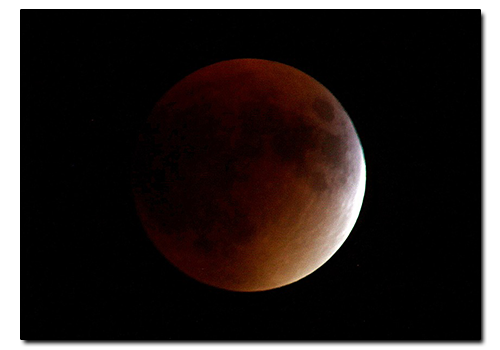
[Fonte]
 La Luna Rossa, alias l'eclissi lunare, è dovuta ad un fenomeno di scattering e di rifrazione della luce solare, che ne tinge il disco di sfumature rossastre senza che la luce diretta del sole ne colpisca effettivamente la superficie. Sì, avete letto bene, se già non ne eravate a conoscenza la sfumatura rossastra della Luna in questo periodo è dovuta allo spettro della luce solare che rifratto dalla superficie terrestre permea la nostra atmosfera (gli ultravioletti sparpagliati in tutte le direzioni rendono più blu il cielo, mentre gli infrarossi sono meno diffusi dall'aria). Questa è una spiegazione un po' semplicistica tuttavia, giacché vi sono altri fattori da considerare quali i colori riflessi dal nostro pianeta (tutt'altro che rosso), ma non la complicherò oltre. Come quella solare, l'eclissi di luna può essere parziale o totale. Questa che avremo quest'anno, secondo Wikipedia sarà un'eclissi totale!
La Luna Rossa, alias l'eclissi lunare, è dovuta ad un fenomeno di scattering e di rifrazione della luce solare, che ne tinge il disco di sfumature rossastre senza che la luce diretta del sole ne colpisca effettivamente la superficie. Sì, avete letto bene, se già non ne eravate a conoscenza la sfumatura rossastra della Luna in questo periodo è dovuta allo spettro della luce solare che rifratto dalla superficie terrestre permea la nostra atmosfera (gli ultravioletti sparpagliati in tutte le direzioni rendono più blu il cielo, mentre gli infrarossi sono meno diffusi dall'aria). Questa è una spiegazione un po' semplicistica tuttavia, giacché vi sono altri fattori da considerare quali i colori riflessi dal nostro pianeta (tutt'altro che rosso), ma non la complicherò oltre. Come quella solare, l'eclissi di luna può essere parziale o totale. Questa che avremo quest'anno, secondo Wikipedia sarà un'eclissi totale!
 The Red Moon, alias the lunar eclipse, is due to a phenomenon of scattering and refraction of sunlight, which tinges the disc of reddish hues without the direct sunlight actually striking the surface. Yes, you read that right, if you did not already know the reddish nuance of the Moon in this period is due to the spectrum of sunlight refracted from the Earth's surface permeates our atmosphere (the ultraviolet scattered in all directions make the sky bluer , while infrared are less common in the air). This is a somewhat simplistic explanation, however, since there are other factors to consider such as the colors reflected by our planet (anything but red), but I will not complicate it any further. Like the solar one, the lunar eclipse can be partial or total. This we will have this year, second Wikipedia, will be a total eclipse!
The Red Moon, alias the lunar eclipse, is due to a phenomenon of scattering and refraction of sunlight, which tinges the disc of reddish hues without the direct sunlight actually striking the surface. Yes, you read that right, if you did not already know the reddish nuance of the Moon in this period is due to the spectrum of sunlight refracted from the Earth's surface permeates our atmosphere (the ultraviolet scattered in all directions make the sky bluer , while infrared are less common in the air). This is a somewhat simplistic explanation, however, since there are other factors to consider such as the colors reflected by our planet (anything but red), but I will not complicate it any further. Like the solar one, the lunar eclipse can be partial or total. This we will have this year, second Wikipedia, will be a total eclipse!
[12 e 13 Agosto 2018]
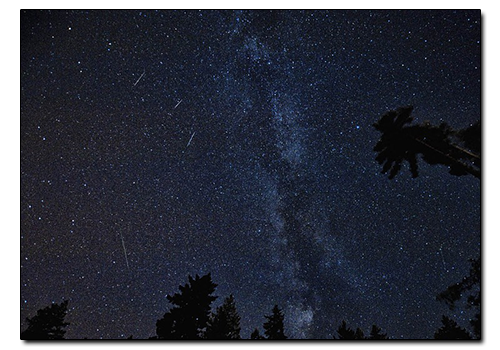
[Fonte]
 Si tratta di un altro sciame meteorico annuale cui la Terra si ritrova a passare accanto da metà Luglio ad oltre metà Agosto, con picco intorno al 12. Tale sciame, fra i più evidenti ad occhio nudo, ha avuto origine dalla cometa Swift-Tuttle, dal nucleo di 10 km, il cui ultimo passaggio al perielio è avvenuto nell'anno 1992.
Si tratta di un altro sciame meteorico annuale cui la Terra si ritrova a passare accanto da metà Luglio ad oltre metà Agosto, con picco intorno al 12. Tale sciame, fra i più evidenti ad occhio nudo, ha avuto origine dalla cometa Swift-Tuttle, dal nucleo di 10 km, il cui ultimo passaggio al perielio è avvenuto nell'anno 1992.
In Italia questo fenomeno è noto anche come Lacrime di San Lorenzo.
 This is another annual meteor shower which the Earth finds to pass by from mid-July to over mid-August, with a peak around 12. This swarm, among the most obvious to the naked eye, originated from the comet Swift -Tuttle, from the nucleus of 10 km, whose last passage to perihelion occurred in the year 1992.
This is another annual meteor shower which the Earth finds to pass by from mid-July to over mid-August, with a peak around 12. This swarm, among the most obvious to the naked eye, originated from the comet Swift -Tuttle, from the nucleus of 10 km, whose last passage to perihelion occurred in the year 1992.
[2 Ottobre 2018]
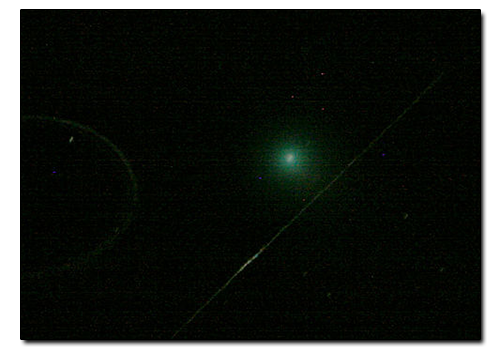
[ Fonte ]
 Questo sciame deve il suo nome alla costellazione di Orione, da cui apparentemente nasce. Esso è ufficialmente noto dall'anno 1839 ed è uno dei due sciami meteorici originati dalla Terra attraversando la scia della Cometa di Halley! E la luce sprigionata da tali meteore appare (non ad occhio nudo) di tonalità giallo-verdognola (particolare, non credete?!).
Questo sciame deve il suo nome alla costellazione di Orione, da cui apparentemente nasce. Esso è ufficialmente noto dall'anno 1839 ed è uno dei due sciami meteorici originati dalla Terra attraversando la scia della Cometa di Halley! E la luce sprigionata da tali meteore appare (non ad occhio nudo) di tonalità giallo-verdognola (particolare, non credete?!).
 This meteor shower owes its name to the constellation of Orion, from which it apparently arises. It is officially known from the year 1839 and is one of the two meteoric swarms originated from the Earth crossing the wake of Halley's Comet! And the light emanating from these meteors appears (not with the naked eye) of greenish-yellow hues (particular, do not you think ?!).
This meteor shower owes its name to the constellation of Orion, from which it apparently arises. It is officially known from the year 1839 and is one of the two meteoric swarms originated from the Earth crossing the wake of Halley's Comet! And the light emanating from these meteors appears (not with the naked eye) of greenish-yellow hues (particular, do not you think ?!).
[17 e 18 Novembre 2018]
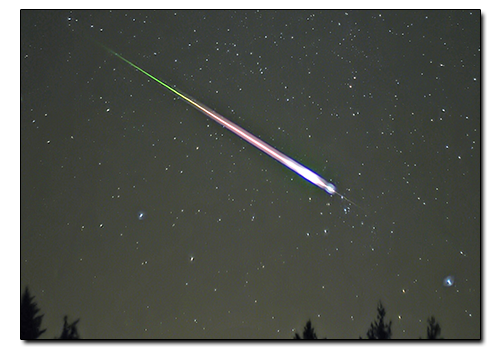
[ Fonte ]
 Questo sciame è originato dalla cometa Tempel-Tuttle che, durante il suo passaggio intorno al sole, rilascia particelle chiamate “meteoridi” che paiono partire proprio dalla costellazione del Leone. La loro traiettoria tuttavia non è identica a quella della cometa-madre giacché disturbate dagli altri pianeti del sistema solare (Giove in primis).
Questo sciame è originato dalla cometa Tempel-Tuttle che, durante il suo passaggio intorno al sole, rilascia particelle chiamate “meteoridi” che paiono partire proprio dalla costellazione del Leone. La loro traiettoria tuttavia non è identica a quella della cometa-madre giacché disturbate dagli altri pianeti del sistema solare (Giove in primis).
 This meteor shower originates from the Tempel-Tuttle comet which, during its passage around the sun, releases particles called " meteorids " that seem to start from the constellation of Leo. Their trajectory, however, is not identical to that of the comet-mother since they are disturbed by the other planets of the solar system (Jupiter in primis).
This meteor shower originates from the Tempel-Tuttle comet which, during its passage around the sun, releases particles called " meteorids " that seem to start from the constellation of Leo. Their trajectory, however, is not identical to that of the comet-mother since they are disturbed by the other planets of the solar system (Jupiter in primis).
[7 e 17 Dicembre 2018]
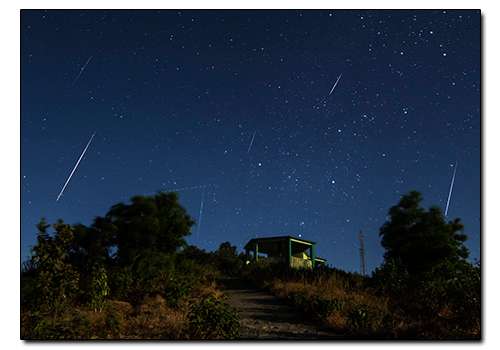
[Fonte]
 Questo sciame meteorico è uno – se non il più importante dei fenomeni astronomici periodici del nostro cielo. Apparentemente con partenza dalla stella Alpha della costellazione di Gemini (Gemelli), è causato da quello che è un asteroide: 5,1 km di diametro, la cui orbita incrocia quella di Mercurio, Terra, Venere e Marte. 3200 Phaethon (questo il suo nome) pare presenti caratteristiche inusuali per un asteroide comune – pare sbriciolarsi durante il suo passaggio vicino al Sole ed avere un'orbita ellissoidale – e si ipotizza persino possa trattarsi di una cometa estinta!
Questo sciame meteorico è uno – se non il più importante dei fenomeni astronomici periodici del nostro cielo. Apparentemente con partenza dalla stella Alpha della costellazione di Gemini (Gemelli), è causato da quello che è un asteroide: 5,1 km di diametro, la cui orbita incrocia quella di Mercurio, Terra, Venere e Marte. 3200 Phaethon (questo il suo nome) pare presenti caratteristiche inusuali per un asteroide comune – pare sbriciolarsi durante il suo passaggio vicino al Sole ed avere un'orbita ellissoidale – e si ipotizza persino possa trattarsi di una cometa estinta!
 This meteor shower is one - if not the most important of the periodic astronomical phenomena of our sky. Apparently starting from the Alpha star of the constellation Gemini (Gemini), it is caused by what is an asteroid: 5.1 km in diameter, whose orbit crosses that of Mercury, Earth, Venus and Mars. 3200 Phaethon (this is his name) seems to have unusual characteristics for a common asteroid - it seems to crumble during its passage near the Sun and have an ellipsoidal orbit - and it is even hypothesized that it may be an extinct comet!
This meteor shower is one - if not the most important of the periodic astronomical phenomena of our sky. Apparently starting from the Alpha star of the constellation Gemini (Gemini), it is caused by what is an asteroid: 5.1 km in diameter, whose orbit crosses that of Mercury, Earth, Venus and Mars. 3200 Phaethon (this is his name) seems to have unusual characteristics for a common asteroid - it seems to crumble during its passage near the Sun and have an ellipsoidal orbit - and it is even hypothesized that it may be an extinct comet!
 Beh, per oggi è tutto, spero come sempre di aver suscitato la vostra curiosità se non il vostro diretto interesse! Alla prossima!
Beh, per oggi è tutto, spero come sempre di aver suscitato la vostra curiosità se non il vostro diretto interesse! Alla prossima!
 That's it for today! I hope as always to have aroused your curiosity if not your direct interest! See you next time!
That's it for today! I hope as always to have aroused your curiosity if not your direct interest! See you next time!
Bibliography: Wikipedia

Brava! Hai ricevuto un voto anche da SteemStem!
Downvoting a post can decrease pending rewards and make it less visible. Common reasons:
Submit
Wow! Grazie mille!!!
Downvoting a post can decrease pending rewards and make it less visible. Common reasons:
Submit
Congratulations @kaiyoko! You have completed some achievement on Steemit and have been rewarded with new badge(s) :
Click on any badge to view your own Board of Honor on SteemitBoard.
For more information about SteemitBoard, click here
If you no longer want to receive notifications, reply to this comment with the word
STOPDownvoting a post can decrease pending rewards and make it less visible. Common reasons:
Submit
Post Stupendo! Bravissima, mi è piaciuto un sacco! Ti seguo! 😃
Downvoting a post can decrease pending rewards and make it less visible. Common reasons:
Submit